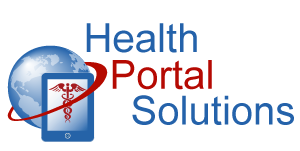In our last blog, we explained what an integrated portal can do to consolidate a Payer’s technology and business. While that sounds great in concept, it may seem daunting to do. In this blog, we’ll talk about how portals do this consolidating and share some news that will bring you as a Payer a huge sigh of relief!
Data Import
The primary way portals consolidate for you is by importing data from your various systems. This typically starts with the claim adjudication system, which houses all the critical data about your members, employers, and providers. After this first import is done, it is easy to import data from your other systems or vendors and match that to your claim system data. Because all your important data is in one place, your users can log into one place and see all the data that’s related to them, regardless of which system it came from.
Web Services
Sometimes the data in your systems changes rapidly. Or sometimes it makes more sense to continue storing your data in that system rather than in your online portal. In cases like these, the portal uses web services to quickly grab the needed information from your system and display it online. For example, if a provider needs access to patient accumulators or if a member needs access to EOBs, the portal web service will tap the system that has that information, get it, and display it online. Though that information is actually stored in an outside system, the user will see it in your portal – right with all of their other information.
Single-Sign-On
Many times Payers use third party vendors or systems for a specific service – such as case management, telemedicine, health coaching, or quote generation. Oftentimes these vendors have their own portal, and it doesn’t make sense to reproduce that functionality in the Payer’s main portal. As a result, an integrated portal can create a single-sign-on (SSO), which is a direct link from the Payer’s main portal to an outside portal. The main benefit of SSO is that it prevents the user from having to log in another time to access this other portal, making for an easier, more seamless online experience. However, it’s also beneficial to Payers, because they don’t need to spend time educating users on which portals to log into for what – all of their information is still accessible from their main portal.
There are multiple ways for portals to consolidate your technology, but to a non-technical mind, this all can still seem pretty intimidating. However, the good news is that with any portal consolidation, HPS does all the heavy lifting for the Payer. Whether it’s mapping and loading data, writing software for integration, coordinating with vendors, or QA testing, we take on these tasks for you so you can just focus on the important aspects of growing your business.
To see firsthand how your portal can use one or all of these methods for a seamless online experience, schedule a demo.

